
Others
Six things to know about Rafa Mata
Follow TRiCERA on Instagram and check out our creative artists
5%OFF & free shipping 1st purchase
FIRSTART5
10%OFF 2nd purchase after 1st purchase!
Welcome to TRiCERA
Hi there! We are pleased to have you here 🎉
Could you please describe yourself?
Guest
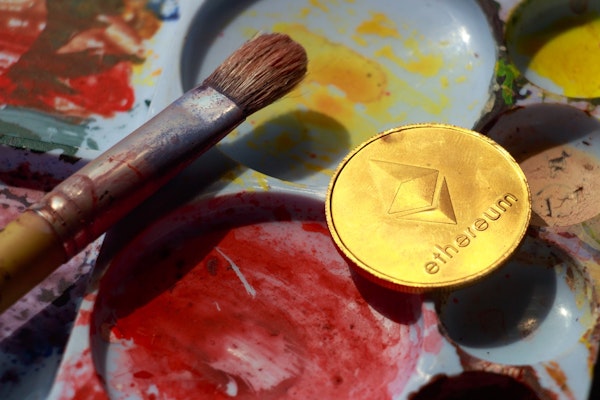
Currently, there is an unprecedented boom in art investment around the world and in Japan as well.
Some people may be interested in art investment, but may not know how to start investing and may not be able to take the first step.
In this article, we will introduce the appeal of art investment, how to get started, and recommended artworks from an expert's perspective.
Why not learn more about art investment and try to achieve an affluent life with art?
What exactly is art investment?
Let's check it out along with global and Japanese trends.
Art investment is an investment method that aims to make profits by buying and selling artworks, such as paintings, sculptures, and antiques, as investment targets instead of stocks and bonds.
This is a very attractive investment because the price of a work of art can increase dozens of times, such as when the artist of the work you own suddenly becomes famous.
The price range is wide, from tens of thousands of yen for inexpensive pieces to tens of billions of yen for more expensive pieces, making it possible to invest according to your budget.
Trends around the world Contemporary art investments are attracting a lot of attention.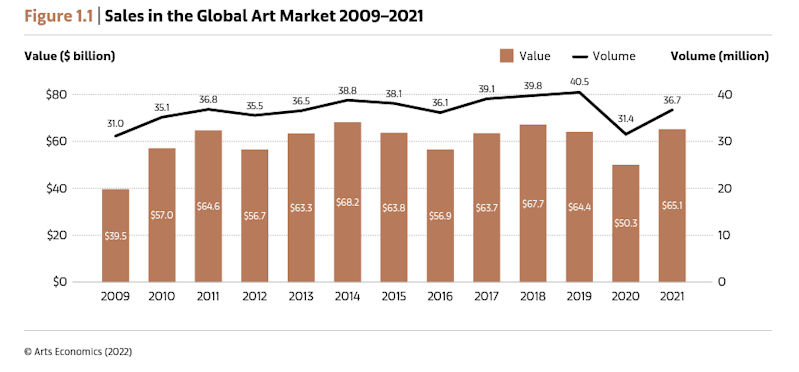
In the Corona disaster that caused global economic damage, the size of the art market dropped to about 6 trillion yen in 2020, buthas recovered to a huge market ofabout 7 to 8 trillionyen in 2021.
Among wealthy Americans, it is common to believe that "5% of one's portfolio of assets should be diversified into the arts.
This shows how familiar they are with art investment in the United States.
Among art investments, contemporary art is gaining popularity as a global trend.
Contemporary art often expresses criticism of social issues, and can be enjoyed from the perspectives of both appreciation and contemplation.
Another important point is that, unlike classical art, contemporary art is created by living artists.
Another reason for the popularity of contemporary art is that it is possible to ask questions and seek explanations directly from the artists themselves about works that are difficult to interpret.
Currently, many famous entrepreneurs in Japan, including former ZOZO representative Yusaku Maezawa, are investing in art, which has become a hot topic.
Due in part to the influence of Corona, there is an unprecedented art boom in Japan, with increasing demand for art to decorate homes where people have come to spend long periods of time, or to display art in offices.
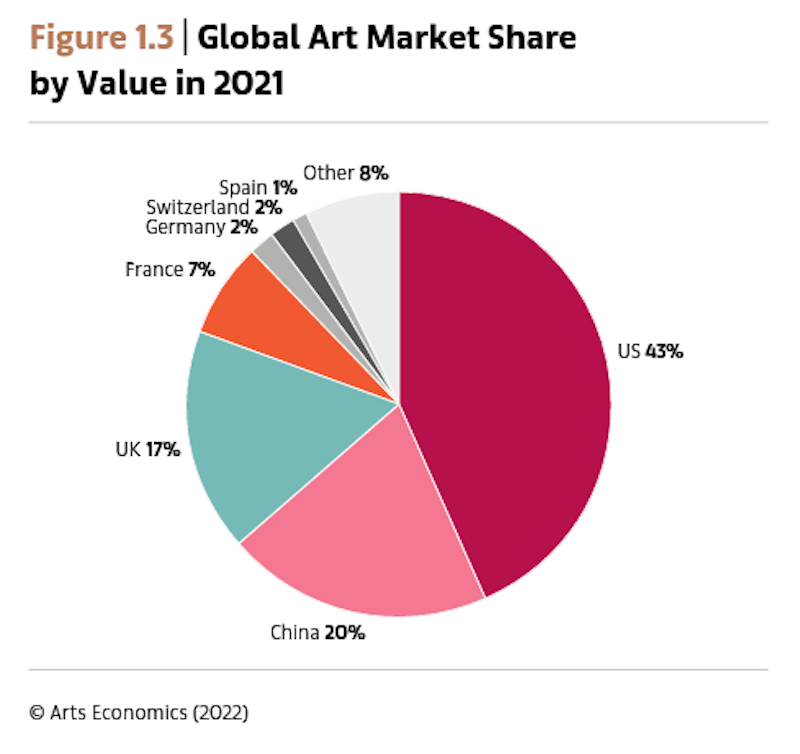
However, from a global perspective, the Japanese art market accounts for less than 1% of the global market.
In Japan, there is still a strong sense that art is something to be appreciated, not owned.
In other words, you can see that this is a market that still has room for growth in Japan.
So, what are the attractions and risks of art investment that you should be aware of?
First, did you know that the actual rate of increase in asset value of art works is actually quite superior to that of stocks and bonds?
On average, they maintain an annual price appreciation rate of 14.0%, which is attractive compared to other asset classes.
Globally, statistics show that "art asset values have increased by about 1,700% from 2000 to 2020.
Of course, not all of this is true, but it is possible that a work of art that sold for tens of thousands of yen could rise to over 10 million yen in a few years.
Although art investment is often thought of as a slightly risky investment, it is actually a very attractive investment.
Furthermore, it has the property that it is not affected by the movements of wealthy people around the world or trends in specific regions, as it is noted to have a fairly low correlation with financial assets.

The second attraction is that artwork can be expensed.
Effective January 1, 2015, a law was enacted stating that art works with an acquisition cost of less than 1 million yen per piece are considered depreciable assets.
Art purchased for business use for less than 1,000,000 yen can be expensed over 8 years as depreciation.
Small and medium enterprises and sole proprietorships can also expense up to 3 million yen per year for artwork under 300,000 yen.
This is a great way for business owners to save on taxes while enjoying artwork.
Unlike stocks and bonds, the third attractive point of art investment is that you can enjoy the artworks you invest in while appreciating them.
This is a very meaningful investment, as you can enjoy the growth of the artwork and the artist while also investing in it.
Just one piece of art in your home or office is sure to enrich your family and your employees.
Exposure to art will refine your sensibilities and may even increase the quality of your work.
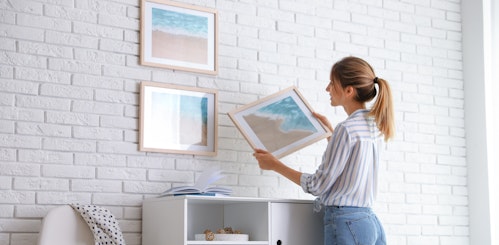
Art investments, like stocks and foreign exchange, cannot be traded in the short term to make large sums of money.
There are some very rare works of art that can increase in value significantly in a short period of time, but it basically takes time for the work and the artist to appreciate in value.
It is important to understand that this is a long-term investment, as commissions are high and it takes time to sell.
There is also a good chance that the artwork you purchase will drop in value, and there is a good chance that it will lose value.
Furthermore, there is no denying the possibility that the value of the artwork may decrease over time due to deterioration as it is displayed in a sunny location, such as a lobby, for an extended period of time.
While there are always risks involved in investing, it is important to understand the unique risks associated with art and to confirm the measures that can be taken in advance before making an investment in art.
The following is an introduction to the five most common ways to invest in art and how to do it.
The first method is to purchase artworks at auctions, which is often seen in movies and other media.
Famous art is often handled at auctions.
At auctions, collectors and investors from all over the world gather to participate in the auction and bid on the targeted artwork.
Although often thought of as closed, with only a limited number of people in the industry able to participate, anyone can actually participate in an auction by applying in advance.
Advantages include the ability to consider a purchase after receiving an expert's opinion and being able to check out the actual piece beforehand.
In addition, since appraised artwork is sold at auction, you can buy with peace of mind.
On the other hand, the disadvantages are the nearly 20% commission fee and the fact that professional buyers and investors will bid up the price.
This is an investment method for those who have sufficient funds.
The next method is to purchase art works at art galleries.
You may find a work of art you like at a gallery or art gallery you drop in on a whim.
If you do not find a work of art you like, let the person in charge know your budget and preferences, and he or she will be happy to discuss your purchase with you.
The advantage of purchasing artwork at a gallery or art gallery is that you can actually see and purchase artwork at your leisure.
In addition, art galleries and galleries often display works by unknown artists, so you may be able to discover artwork that will grow in the future.
On the other hand, the disadvantage is that there is a limit to the number of works that can be displayed in a gallery or art gallery, so the number of works that can be viewed at one time is small.
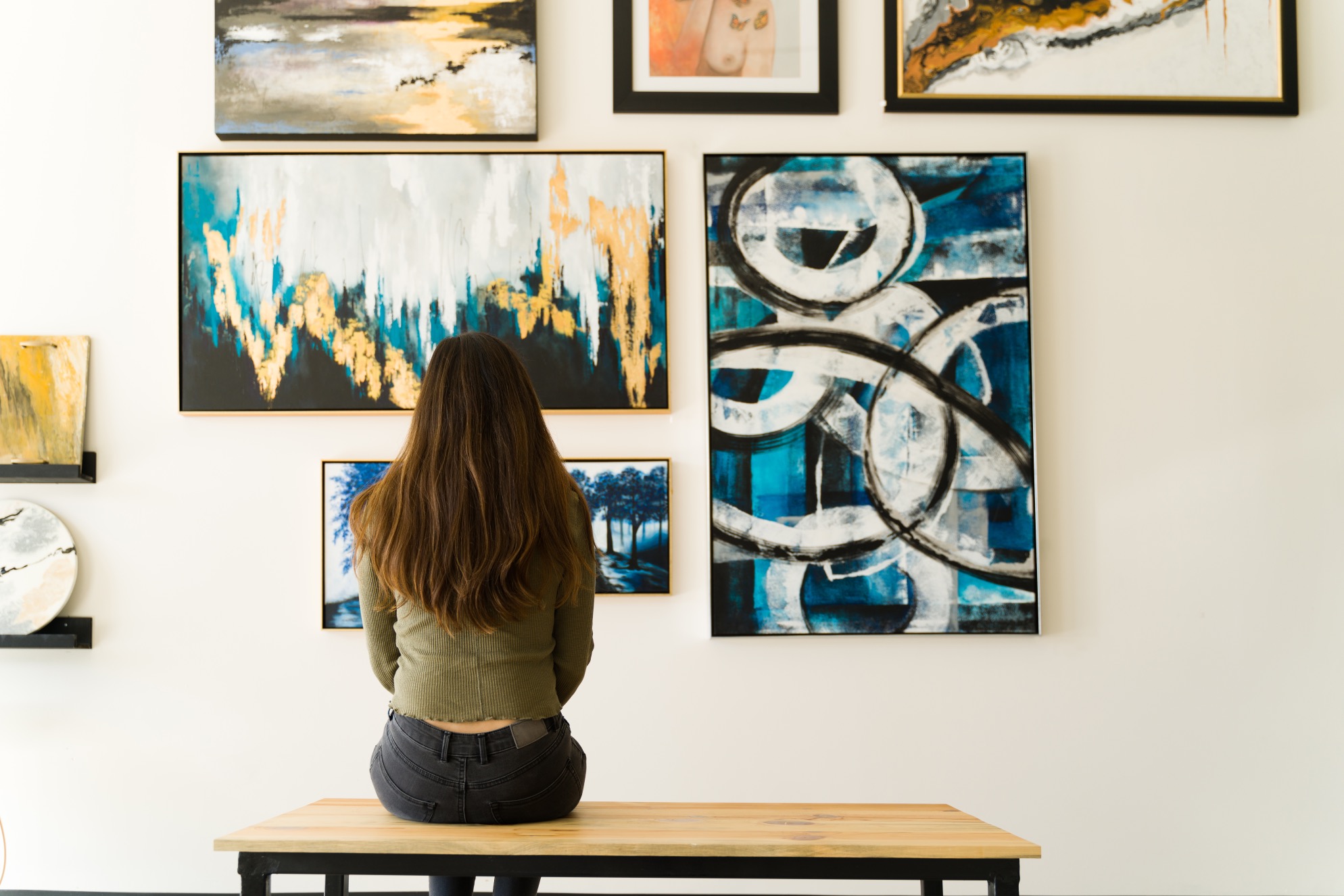
Recently, purchasing artwork on the Internet has become a mainstream method.
The Internet allows you to view the works of many artists at once, making it possible to find a work of art that suits your sensibilities and budget.
The advantage is that there is no need to go to art galleries or auctions, and some prices are inexpensive, making it a low hurdle for beginners to start.
On the other hand, the disadvantages are that you cannot get a professional opinion and you have to purchase without seeing the actual piece.
At Tricera Art, you can chat with us about your concerns specific to online purchasing.
Our experienced staff will be happy to answer questions about framing and what kind of artwork would be appropriate for your home or office.
Please feel free to contact us via chat, e-mail, LINE, or phone at the bottom right of the homepage.
For those who want to invest in art without the hassle of researching and purchasing it on their own, art investment funds and investment trusts are available.
Investment funds and mutual funds provide advice on the purchase and management of artworks for investment, and even consider when to sell them.
The advantage is that the fund or trust will suggest purchases based on solid research based on past performance, allowing you to own art that is more likely to increase in value than if you purchase it privately.
However, as a disadvantage, the fees paid to the fund or mutual fund are quite high.
Joint ownership of art, which has become a hot topic recently, is a purchase method that is gaining popularity overseas.
It is a system whereby a work of art is not owned by one person, but shared ownership by several people, allowing the owner to own a work of art for a small amount of money.
Using the joint ownership application, you can jointly own famous and expensive artworks that cannot be owned by a single person, which cost several million to several tens of millions of yen per piece.
The advantage of this system is that you can purchase and own artworks by famous artists such as Banksy and KAWS for a small amount of money.
On the other hand, the artwork itself cannot be displayed in your home or office, which may be insufficient for those who want to keep art close at hand.
To invest in art, you need to have a good eye for art.
Investing is an information war.
If you don't have enough basic knowledge and information about art and the artists you plan to purchase, you will not be able to purchase artwork suitable for art investment.
Unfortunately, it is difficult to succeed in art investment if you buy "because you like it intuitively.
It is essential to have the ability to thoroughly research information on artists and artworks, including the market, trends, and social conditions, rather than making decisions based solely on one's own sensibilities and intuition.
Unlike stocks and bonds, it is very important to set a budget for artworks, which are often one-of-a-kind.
When you see artworks you wish to purchase going up in price at auctions, you may be tempted to go over your budget to make a successful bid.
Make sure you have a budget and follow your own investment portfolio when investing in art.
The most important thing to do to start investing in art is to develop a good eye for art.
To this end, we recommend that you get into the habit of looking at a lot of artwork.
By having a habit of seeing artwork on a daily basis, you will be able to establish your own taste for artwork and whether it is good or bad.
Furthermore, you can develop your ability to identify works that are likely to increase in value and artists who are likely to grow in value as art investments.
First, get into the habit of viewing artwork at Tricera Art.
Once you get into the habit of viewing artwork on a daily basis, the next step is to have opportunities to experience actual art.
It is a common occurrence that a work of art that you have admired in a catalog turns out to be completely different from what you imagined when you actually go to view it in person.
Conversely, you may be attracted to a work that did not seem appealing in a magazine or on the Internet because you feel it has potential.
We recommend that you visit art fairs and studios to experience art before you buy it.
Secondary art is artwork that is distributed on the secondary market.
Artworks resold on the secondary market are traded mainly at auction, and prices tend to be higher, especially for artworks by well-known artists.
Considering resale value, this is a good investment option, but financial resources are essential.
Primary art is artwork that appears in primary distribution. You can purchase artwork at galleries, art fairs, and some on the Internet.
This is a great way to buy artwork by well-known artists before the prices rise as high as they do on the secondary market.
However, works by artists who are too well known may be difficult for beginners to purchase, as priority is given to collectors and investors who have a track record of purchasing their works.
Check out some of the most highly regarded artists and their works here.
Artwork by artists who are not yet well known to the public can be purchased through Primary Art, either online, at art galleries, or directly from the artist.
Purchasing a work of art by an unknown artist can be a very attractive investment, as the value of an inexpensive work of art may increase significantly in the future.
Furthermore, it is a great way to enjoy the future potential of an artist and enjoy an investment that grows with the artist.
Here are some contemporary art artists and works of art that we would like to recommend, and which we expect to do well in the future.
In addition You can view the works of up-and-coming artists here.
We have explained the appeal of art investment, how to do it, and recommended artworks from an expert's perspective.
To invest in art, it is very important to gather information and have a good eye for art.
In order to make a convincing art investment, you should develop the habit of being exposed to a lot of art on a regular basis and cultivate the ability to discover artworks and artists who will grow in the future.
Tricera introduces many artworks and artists who are likely to be active in the future.
Why not adopt this as a habit of art exposure?
You will develop your connoisseurship and may even find your favorite piece of art.
References.
Papers, Papers, Art Market Report, Papers, Report
- Discounts, including members-only secret sales and coupons
- Create your own collection by registering your favorite artists
- Receive updates on popular artists, exhibitions, and events
- Receive a weekly newsletter with selected art
- Personal Assessment to find out what kind of art you like.
Please register as a member for free and receive the latest information.

Writer
TRiCERA ART

Currently, there is an unprecedented boom in art investment around the world and in Japan as well.
Some people may be interested in art investment, but may not know how to start investing and may not be able to take the first step.
In this article, we will introduce the appeal of art investment, how to get started, and recommended artworks from an expert's perspective.
Why not learn more about art investment and try to achieve an affluent life with art?
What exactly is art investment?
Let's check it out along with global and Japanese trends.
Art investment is an investment method that aims to make profits by buying and selling artworks, such as paintings, sculptures, and antiques, as investment targets instead of stocks and bonds.
This is a very attractive investment because the price of a work of art can increase dozens of times, such as when the artist of the work you own suddenly becomes famous.
The price range is wide, from tens of thousands of yen for inexpensive pieces to tens of billions of yen for more expensive pieces, making it possible to invest according to your budget.
Trends around the world Contemporary art investments are attracting a lot of attention.
In the Corona disaster that caused global economic damage, the size of the art market dropped to about 6 trillion yen in 2020, buthas recovered to a huge market ofabout 7 to 8 trillionyen in 2021.
Among wealthy Americans, it is common to believe that "5% of one's portfolio of assets should be diversified into the arts.
This shows how familiar they are with art investment in the United States.
Among art investments, contemporary art is gaining popularity as a global trend.
Contemporary art often expresses criticism of social issues, and can be enjoyed from the perspectives of both appreciation and contemplation.
Another important point is that, unlike classical art, contemporary art is created by living artists.
Another reason for the popularity of contemporary art is that it is possible to ask questions and seek explanations directly from the artists themselves about works that are difficult to interpret.
Currently, many famous entrepreneurs in Japan, including former ZOZO representative Yusaku Maezawa, are investing in art, which has become a hot topic.
Due in part to the influence of Corona, there is an unprecedented art boom in Japan, with increasing demand for art to decorate homes where people have come to spend long periods of time, or to display art in offices.

However, from a global perspective, the Japanese art market accounts for less than 1% of the global market.
In Japan, there is still a strong sense that art is something to be appreciated, not owned.
In other words, you can see that this is a market that still has room for growth in Japan.
So, what are the attractions and risks of art investment that you should be aware of?
First, did you know that the actual rate of increase in asset value of art works is actually quite superior to that of stocks and bonds?
On average, they maintain an annual price appreciation rate of 14.0%, which is attractive compared to other asset classes.
Globally, statistics show that "art asset values have increased by about 1,700% from 2000 to 2020.
Of course, not all of this is true, but it is possible that a work of art that sold for tens of thousands of yen could rise to over 10 million yen in a few years.
Although art investment is often thought of as a slightly risky investment, it is actually a very attractive investment.
Furthermore, it has the property that it is not affected by the movements of wealthy people around the world or trends in specific regions, as it is noted to have a fairly low correlation with financial assets.

The second attraction is that artwork can be expensed.
Effective January 1, 2015, a law was enacted stating that art works with an acquisition cost of less than 1 million yen per piece are considered depreciable assets.
Art purchased for business use for less than 1,000,000 yen can be expensed over 8 years as depreciation.
Small and medium enterprises and sole proprietorships can also expense up to 3 million yen per year for artwork under 300,000 yen.
This is a great way for business owners to save on taxes while enjoying artwork.
Unlike stocks and bonds, the third attractive point of art investment is that you can enjoy the artworks you invest in while appreciating them.
This is a very meaningful investment, as you can enjoy the growth of the artwork and the artist while also investing in it.
Just one piece of art in your home or office is sure to enrich your family and your employees.
Exposure to art will refine your sensibilities and may even increase the quality of your work.

Art investments, like stocks and foreign exchange, cannot be traded in the short term to make large sums of money.
There are some very rare works of art that can increase in value significantly in a short period of time, but it basically takes time for the work and the artist to appreciate in value.
It is important to understand that this is a long-term investment, as commissions are high and it takes time to sell.
There is also a good chance that the artwork you purchase will drop in value, and there is a good chance that it will lose value.
Furthermore, there is no denying the possibility that the value of the artwork may decrease over time due to deterioration as it is displayed in a sunny location, such as a lobby, for an extended period of time.
While there are always risks involved in investing, it is important to understand the unique risks associated with art and to confirm the measures that can be taken in advance before making an investment in art.
The following is an introduction to the five most common ways to invest in art and how to do it.
The first method is to purchase artworks at auctions, which is often seen in movies and other media.
Famous art is often handled at auctions.
At auctions, collectors and investors from all over the world gather to participate in the auction and bid on the targeted artwork.
Although often thought of as closed, with only a limited number of people in the industry able to participate, anyone can actually participate in an auction by applying in advance.
Advantages include the ability to consider a purchase after receiving an expert's opinion and being able to check out the actual piece beforehand.
In addition, since appraised artwork is sold at auction, you can buy with peace of mind.
On the other hand, the disadvantages are the nearly 20% commission fee and the fact that professional buyers and investors will bid up the price.
This is an investment method for those who have sufficient funds.
The next method is to purchase art works at art galleries.
You may find a work of art you like at a gallery or art gallery you drop in on a whim.
If you do not find a work of art you like, let the person in charge know your budget and preferences, and he or she will be happy to discuss your purchase with you.
The advantage of purchasing artwork at a gallery or art gallery is that you can actually see and purchase artwork at your leisure.
In addition, art galleries and galleries often display works by unknown artists, so you may be able to discover artwork that will grow in the future.
On the other hand, the disadvantage is that there is a limit to the number of works that can be displayed in a gallery or art gallery, so the number of works that can be viewed at one time is small.

Recently, purchasing artwork on the Internet has become a mainstream method.
The Internet allows you to view the works of many artists at once, making it possible to find a work of art that suits your sensibilities and budget.
The advantage is that there is no need to go to art galleries or auctions, and some prices are inexpensive, making it a low hurdle for beginners to start.
On the other hand, the disadvantages are that you cannot get a professional opinion and you have to purchase without seeing the actual piece.
At Tricera Art, you can chat with us about your concerns specific to online purchasing.
Our experienced staff will be happy to answer questions about framing and what kind of artwork would be appropriate for your home or office.
Please feel free to contact us via chat, e-mail, LINE, or phone at the bottom right of the homepage.
For those who want to invest in art without the hassle of researching and purchasing it on their own, art investment funds and investment trusts are available.
Investment funds and mutual funds provide advice on the purchase and management of artworks for investment, and even consider when to sell them.
The advantage is that the fund or trust will suggest purchases based on solid research based on past performance, allowing you to own art that is more likely to increase in value than if you purchase it privately.
However, as a disadvantage, the fees paid to the fund or mutual fund are quite high.
Joint ownership of art, which has become a hot topic recently, is a purchase method that is gaining popularity overseas.
It is a system whereby a work of art is not owned by one person, but shared ownership by several people, allowing the owner to own a work of art for a small amount of money.
Using the joint ownership application, you can jointly own famous and expensive artworks that cannot be owned by a single person, which cost several million to several tens of millions of yen per piece.
The advantage of this system is that you can purchase and own artworks by famous artists such as Banksy and KAWS for a small amount of money.
On the other hand, the artwork itself cannot be displayed in your home or office, which may be insufficient for those who want to keep art close at hand.
To invest in art, you need to have a good eye for art.
Investing is an information war.
If you don't have enough basic knowledge and information about art and the artists you plan to purchase, you will not be able to purchase artwork suitable for art investment.
Unfortunately, it is difficult to succeed in art investment if you buy "because you like it intuitively.
It is essential to have the ability to thoroughly research information on artists and artworks, including the market, trends, and social conditions, rather than making decisions based solely on one's own sensibilities and intuition.
Unlike stocks and bonds, it is very important to set a budget for artworks, which are often one-of-a-kind.
When you see artworks you wish to purchase going up in price at auctions, you may be tempted to go over your budget to make a successful bid.
Make sure you have a budget and follow your own investment portfolio when investing in art.
The most important thing to do to start investing in art is to develop a good eye for art.
To this end, we recommend that you get into the habit of looking at a lot of artwork.
By having a habit of seeing artwork on a daily basis, you will be able to establish your own taste for artwork and whether it is good or bad.
Furthermore, you can develop your ability to identify works that are likely to increase in value and artists who are likely to grow in value as art investments.
First, get into the habit of viewing artwork at Tricera Art.
Once you get into the habit of viewing artwork on a daily basis, the next step is to have opportunities to experience actual art.
It is a common occurrence that a work of art that you have admired in a catalog turns out to be completely different from what you imagined when you actually go to view it in person.
Conversely, you may be attracted to a work that did not seem appealing in a magazine or on the Internet because you feel it has potential.
We recommend that you visit art fairs and studios to experience art before you buy it.
Secondary art is artwork that is distributed on the secondary market.
Artworks resold on the secondary market are traded mainly at auction, and prices tend to be higher, especially for artworks by well-known artists.
Considering resale value, this is a good investment option, but financial resources are essential.
Primary art is artwork that appears in primary distribution. You can purchase artwork at galleries, art fairs, and some on the Internet.
This is a great way to buy artwork by well-known artists before the prices rise as high as they do on the secondary market.
However, works by artists who are too well known may be difficult for beginners to purchase, as priority is given to collectors and investors who have a track record of purchasing their works.
Check out some of the most highly regarded artists and their works here.
Artwork by artists who are not yet well known to the public can be purchased through Primary Art, either online, at art galleries, or directly from the artist.
Purchasing a work of art by an unknown artist can be a very attractive investment, as the value of an inexpensive work of art may increase significantly in the future.
Furthermore, it is a great way to enjoy the future potential of an artist and enjoy an investment that grows with the artist.
Here are some contemporary art artists and works of art that we would like to recommend, and which we expect to do well in the future.
In addition You can view the works of up-and-coming artists here.
We have explained the appeal of art investment, how to do it, and recommended artworks from an expert's perspective.
To invest in art, it is very important to gather information and have a good eye for art.
In order to make a convincing art investment, you should develop the habit of being exposed to a lot of art on a regular basis and cultivate the ability to discover artworks and artists who will grow in the future.
Tricera introduces many artworks and artists who are likely to be active in the future.
Why not adopt this as a habit of art exposure?
You will develop your connoisseurship and may even find your favorite piece of art.
References.
Papers, Papers, Art Market Report, Papers, Report
- Discounts, including members-only secret sales and coupons
- Create your own collection by registering your favorite artists
- Receive updates on popular artists, exhibitions, and events
- Receive a weekly newsletter with selected art
- Personal Assessment to find out what kind of art you like.
Please register as a member for free and receive the latest information.

Writer
TRiCERA ART